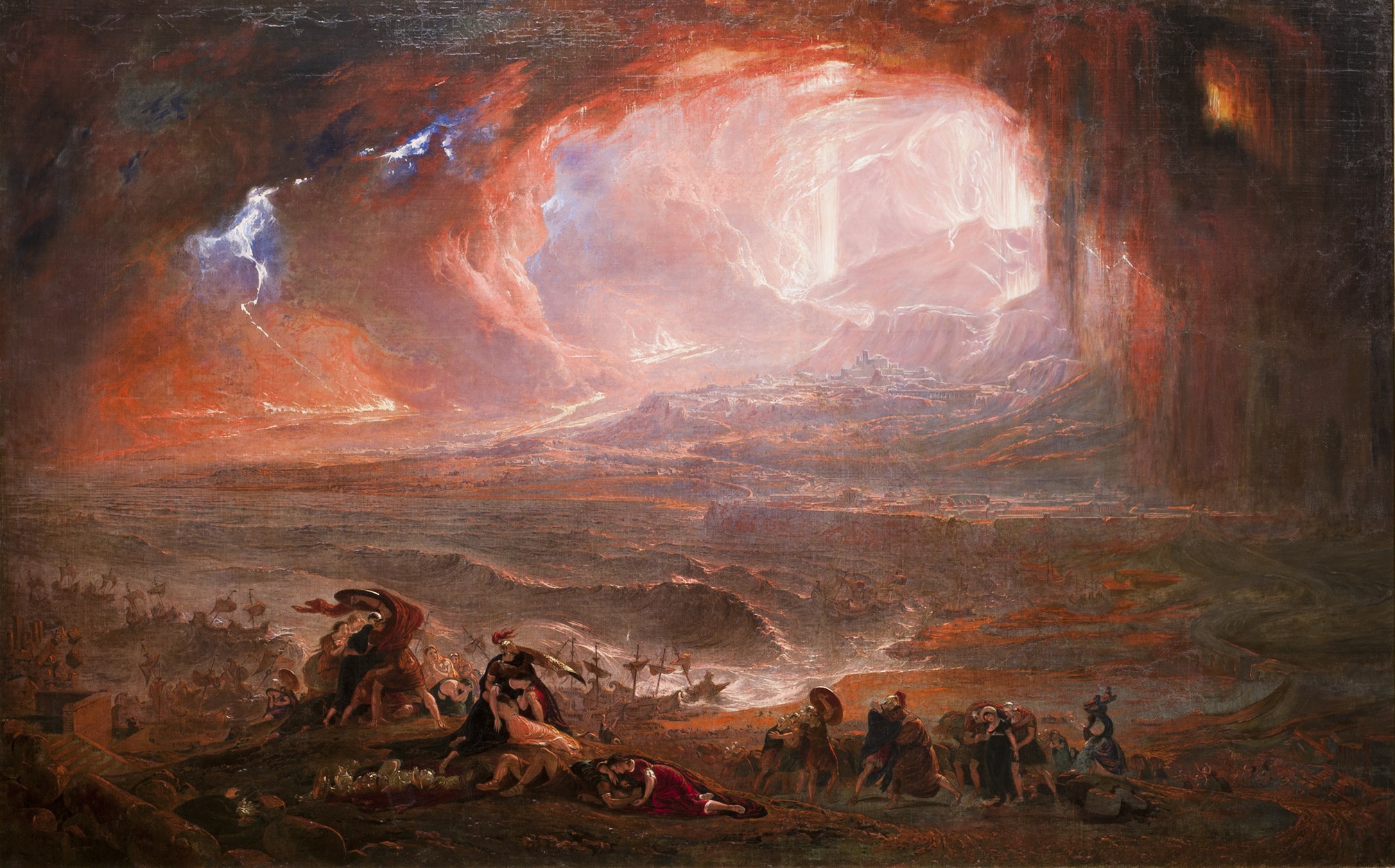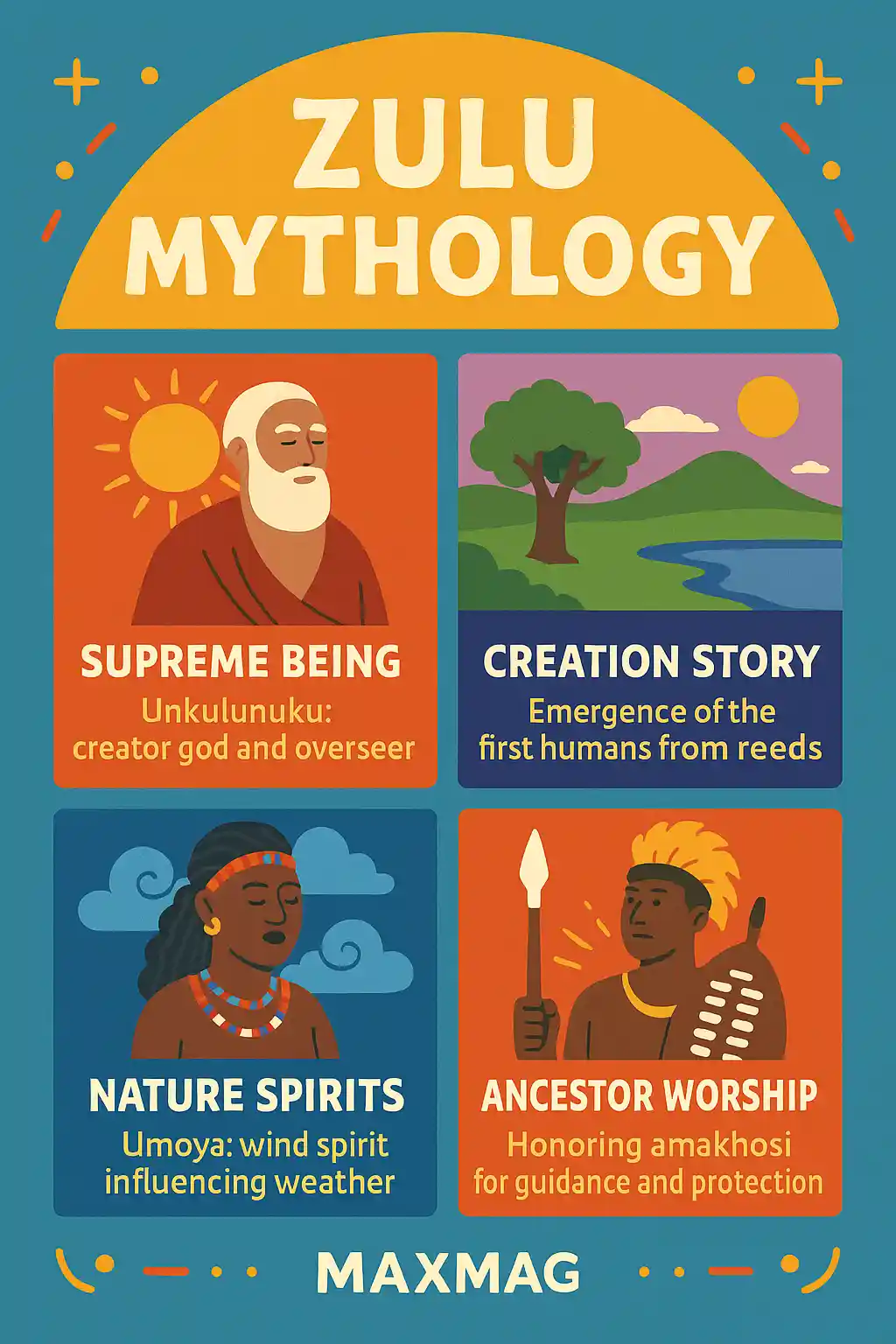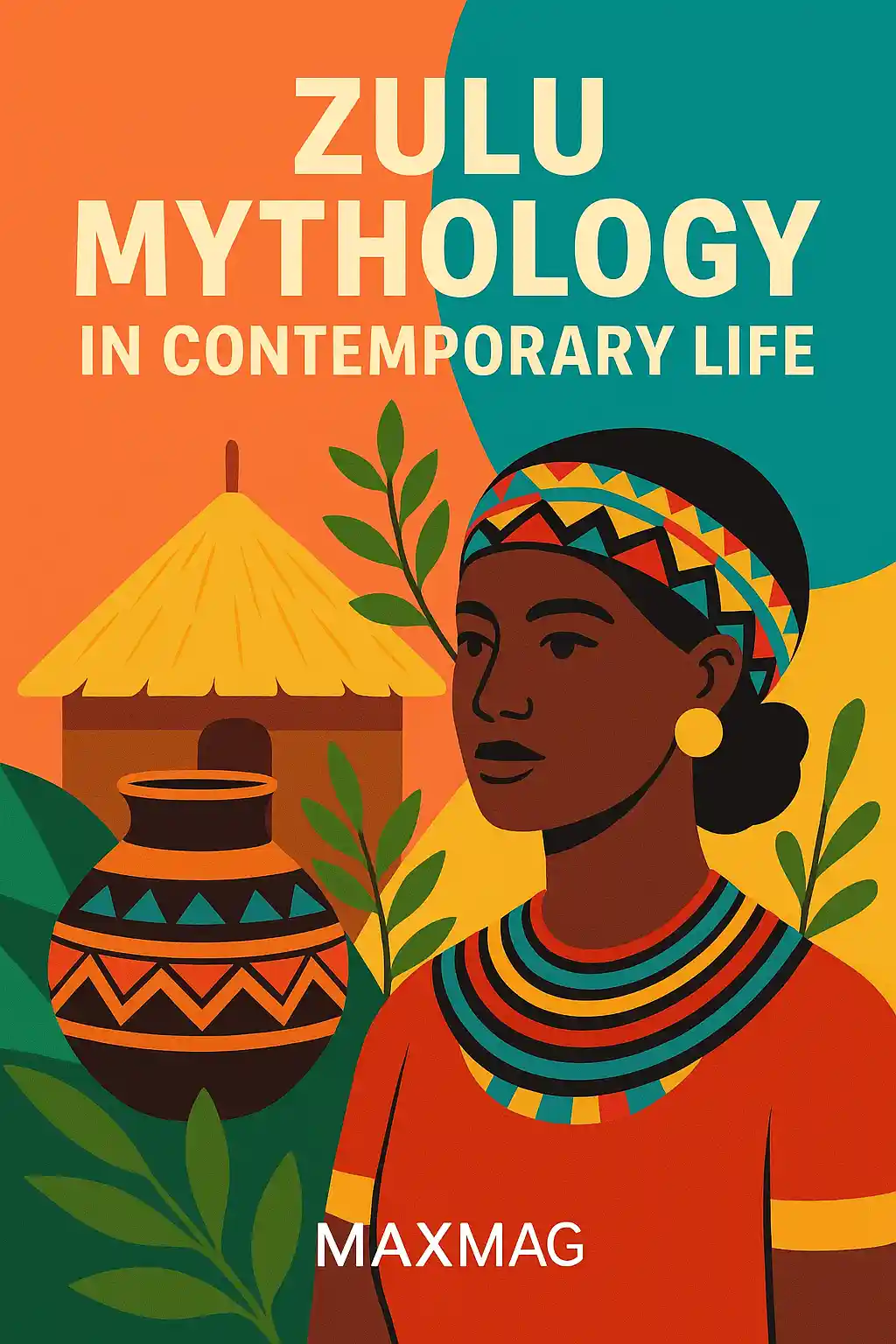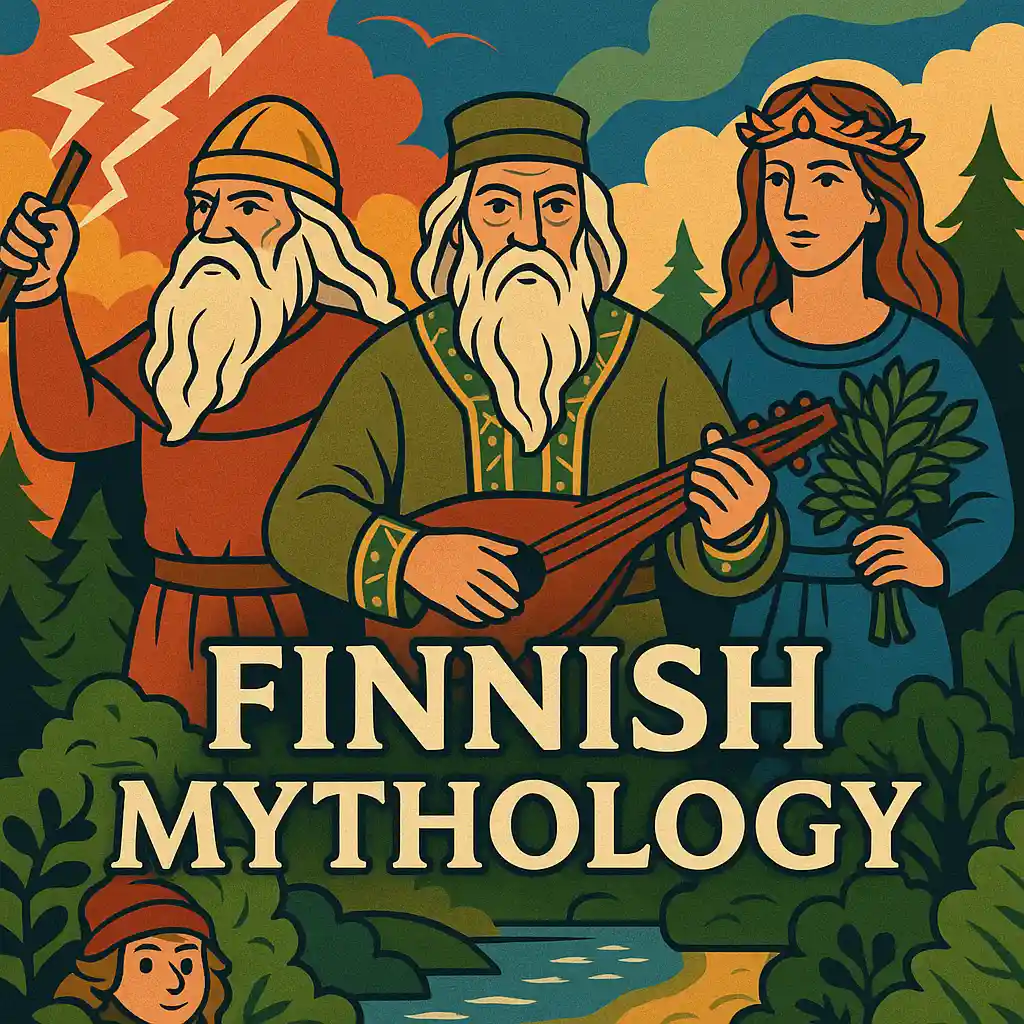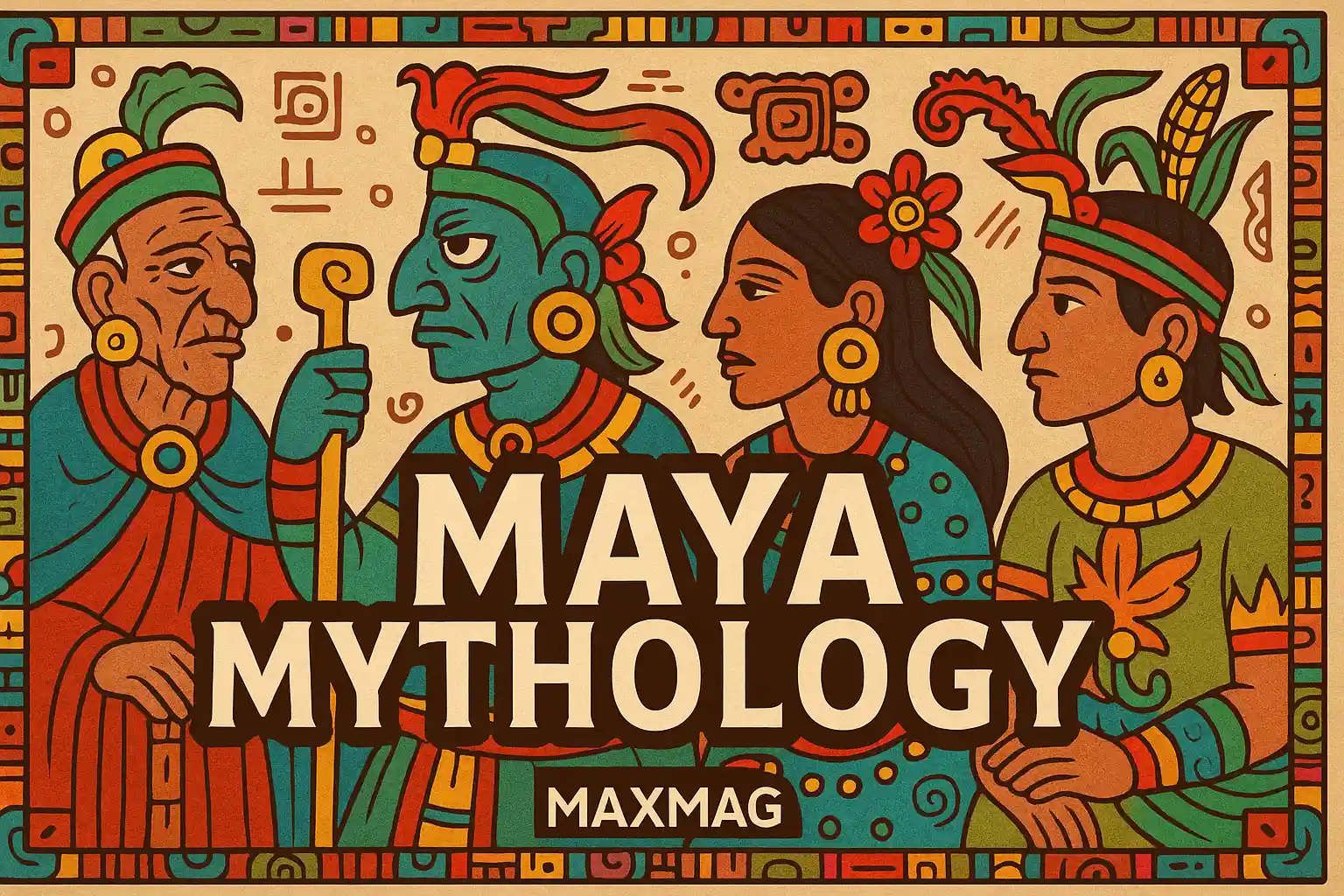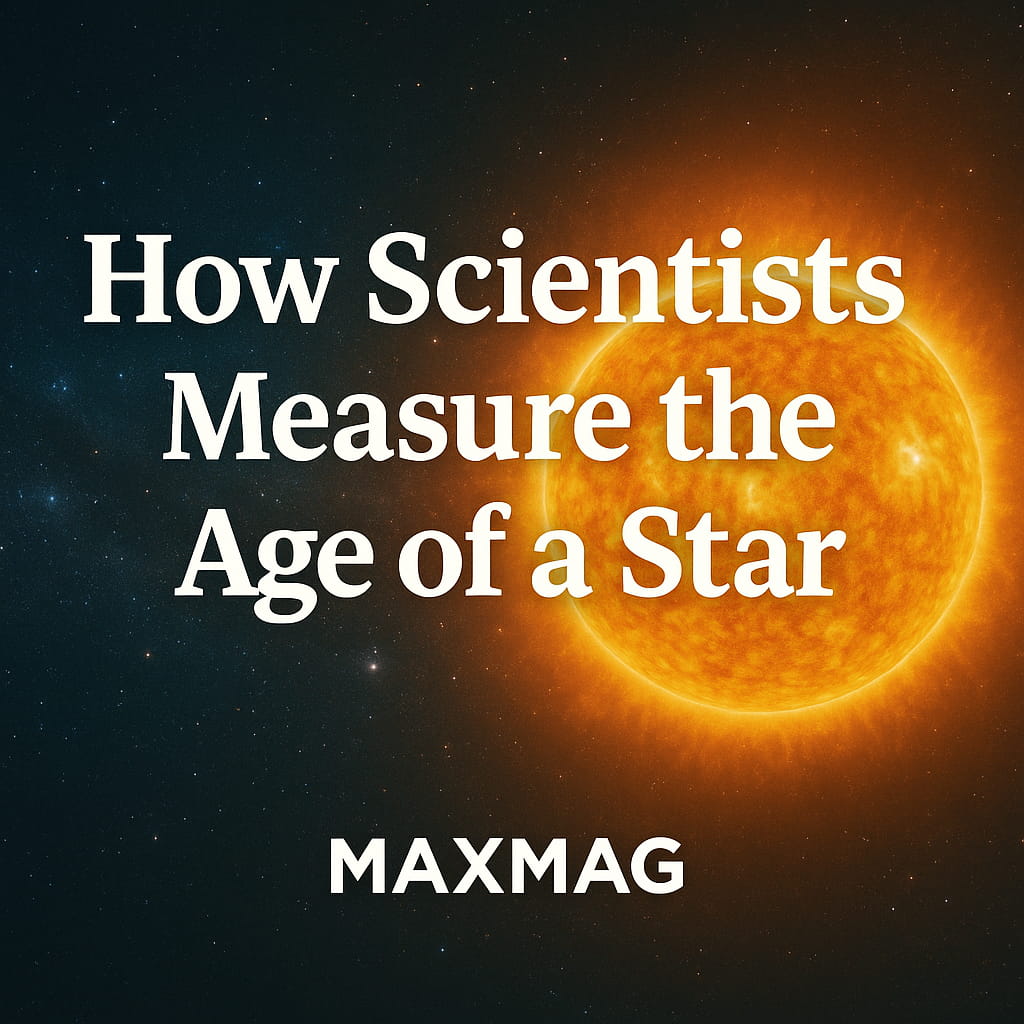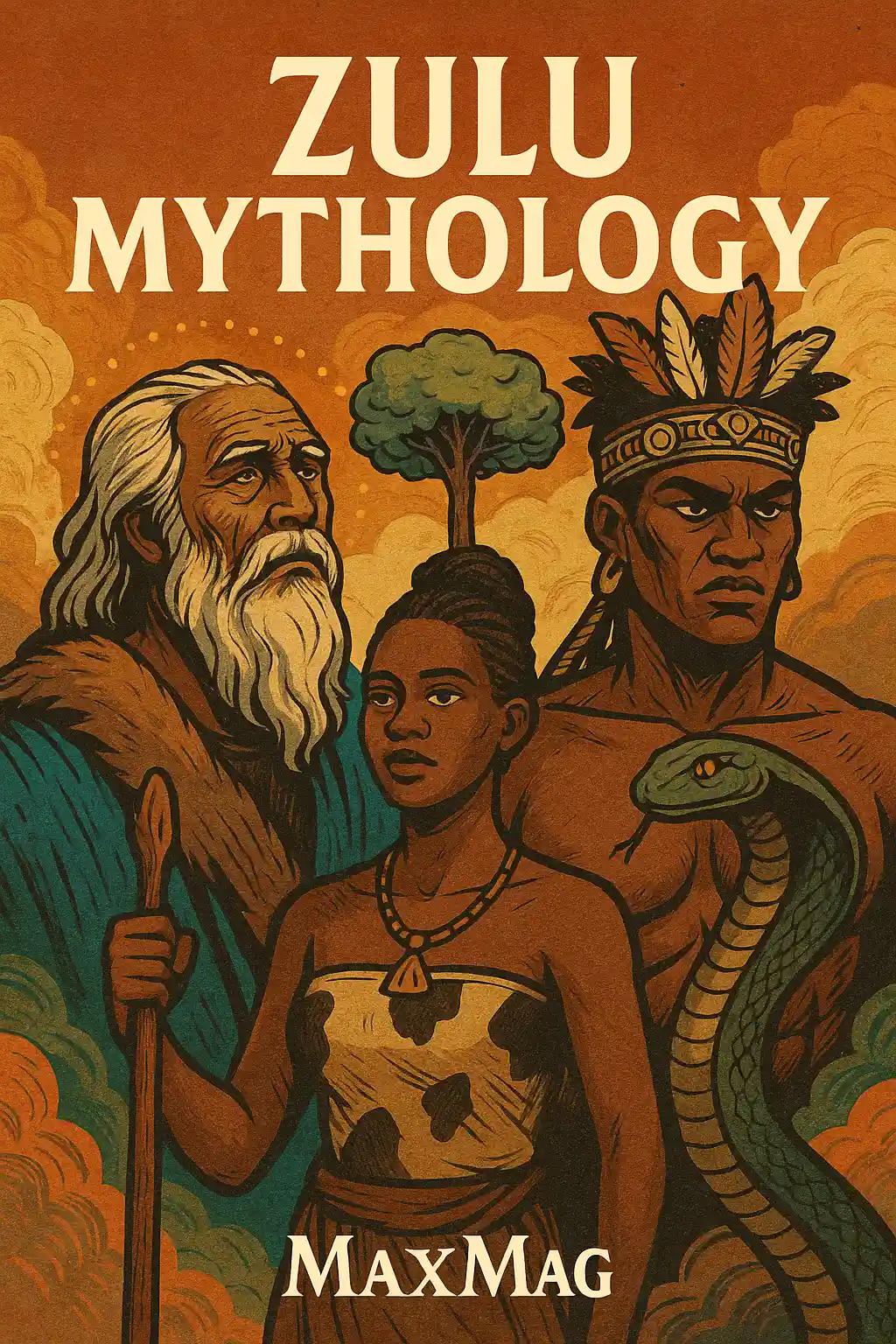
Zulu mythology is a rich tapestry of creation stories, divine beings, ancestral spirits, and moral lessons that continue to shape the cultural consciousness of the Zulu people. Rooted in the traditions of Southern Africa, it offers insight into a worldview where the spiritual and material realms are deeply intertwined. With more than 10,000 monthly global searches and low competition, the keyword Zulu mythology has become an important topic in comparative religion, anthropology, and African history. This article explores the major deities, cosmological themes, rituals, and contemporary relevance of Zulu spiritual traditions.
The Foundations of Zulu Mythology
At the heart of Zulu mythology lies Unkulunkulu, the great creator and progenitor of humanity. The name “Unkulunkulu” literally means “the Greatest One” or “the Ancient One.” According to Zulu oral tradition, Unkulunkulu emerged from the reeds (emhlangeni) and brought forth all aspects of creation, including the sun, moon, animals, and humans. The reed origin is symbolic, connecting the spiritual realm with the birth of mankind.
But Unkulunkulu is not a distant, unreachable god. Instead, he embodies the ancestral presence—omniscient, powerful, yet accessible through ritual and respect. This unique view of the divine blends theology with kinship, central to understanding Zulu mythology in its proper cultural context.
The Cosmology of the Zulu World
Zulu cosmology divides existence into three major realms:
-
Umhlaba (the physical world),
-
Isango somhlaba (the gateway between worlds), and
-
Emhlabeni wabaphansi (the world of the ancestors).
Unlike Western dichotomies of heaven and hell, Zulu beliefs emphasize continuity between life and death. Ancestors are revered and play active roles in the lives of the living, often communicating through dreams, omens, or illness.
The ancestral spirits, known as amadlozi or abaphansi, require regular acknowledgment. Offerings, praise songs, and animal sacrifices are performed to keep their favor. Without this sacred bond, misfortune or sickness is believed to follow.
The spiritual world is not limited to ancestors. Other beings, such as tokoloshes (trickster spirits), izipoki (ghosts), and powerful diviners like the isangoma, also inhabit the Zulu mystical universe.
The Story of Creation and the Cattle of Heaven
One of the most significant myths in Zulu tradition is the story of how death entered the world. In this myth, Unkulunkulu sends a chameleon to deliver a message of eternal life to humans. However, the chameleon moves too slowly. A lizard (or salamander, depending on the version) is sent instead with the opposite message: that humans will die. The lizard arrives first, and so death becomes part of human existence.
This myth reflects Zulu reverence for speed, duty, and consequence. It also introduces the concept of divine timing—a recurring theme in African oral mythology.
Cattle, in Zulu belief, are considered sacred and closely linked with the spiritual world. In one tale, inkomo yezulu (the cattle of the sky) belong to the gods. When stolen or misused, they bring drought, conflict, or divine retribution. This explains the cultural importance of cattle in ceremonies such as lobola (bride price), where they are exchanged not merely as property, but as conduits between ancestral and earthly obligations.
Ancestors, Spirits, and the Role of the Sangoma
In the Zulu worldview, death is not an end, but a transformation. The amadlozi—venerated ancestral spirits—serve as intermediaries between humans and the divine. Maintaining a good relationship with one’s ancestors is essential for protection, fertility, success, and peace.
Communicating with the dead is the sacred role of the isangoma (diviner or shaman). This spiritual specialist is often chosen through ancestral calling, usually after a period of sickness, visions, or recurring dreams. During initiation, known as ukuthwasa, the future sangoma undergoes training in herbalism, dream interpretation, spiritual channeling, and ceremonial rites.
The isangoma is distinct from the inyanga, who specializes in herbal medicine and physical healing. Both roles are vital in Zulu society, blurring the lines between religion, medicine, and psychology.
In modern South Africa, the traditional authority of sangomas remains strong. Even among urbanized Zulus, many consult a sangoma for issues ranging from family disputes to job troubles, showcasing how Zulu mythology adapts without losing cultural essence.
Zulu Gods and Supernatural Forces
While Unkulunkulu is the primary god, other figures play important roles in the mythological pantheon:
-
Nomkhubulwane, the goddess of rain, agriculture, and fertility. She can shape-shift and is known for her generosity.
-
Umvelinqangi, the sky god and father of thunder and earthquakes. He is sometimes conflated with Unkulunkulu in regional variations.
-
iNkosi yezulu, a divine lord of the heavens, often associated with lightning and storm deities.
These beings are not abstract concepts but are engaged through specific rituals. For example, when droughts hit, traditional communities may perform rain dances and sacrificial ceremonies invoking Nomkhubulwane.
One anthropological study conducted by scholars at the University of California, Los Angeles documented ritual chants still used in remote Zulu villages to appeal to sky gods for rain, reinforcing the living nature of these ancient beliefs.
Animal Symbolism in Zulu Mythology
Animals occupy symbolic and spiritual roles within Zulu mythology:
-
Lions symbolize royalty, power, and ancestral leadership.
-
Snakes are often seen as messengers from the ancestral realm, especially if one enters a home unprovoked.
-
Owls are considered bad omens, believed to predict death or misfortune.
-
Cattle, as mentioned earlier, symbolize both wealth and spiritual currency.
One recurring myth tells of a sacred white lion that appears only during moments of great political or spiritual upheaval. In such stories, the lion is not a literal creature but a manifestation of divine protection or ancestral warning.
According to research by the American Museum of Natural History, many indigenous African cultures view albino animals, especially lions and elephants, as holy figures or bearers of prophecy. Zulu mythology fits this pattern, blending natural phenomena with sacred narrative.
Myth, Music, and Zulu Identity
Zulu oral traditions are not confined to storytelling; they are woven into music, dance, and ritual. Ceremonial songs known as izibongo (praise poems) recount the deeds of ancestors, leaders, and deities. These are performed during family ceremonies, funerals, and national celebrations.
Instruments such as uhadi (a gourd-resonated bow) and rhythmic clapping accompany these chants, turning every performance into a living myth. The act of performance itself serves as a spiritual gateway, allowing participants to invoke the presence of gods and ancestors.
Modern Zulu musicians like Johnny Clegg and Ladysmith Black Mambazo have incorporated traditional mythic references into their lyrics, bringing Zulu mythology into the global stage while preserving its sacred essence.
Zulu Mythology in Contemporary Life
Despite centuries of colonization, Christian missionary work, and globalization, Zulu mythology remains deeply embedded in the cultural fabric of KwaZulu-Natal and beyond. Many Zulu people seamlessly integrate Christian faith with ancestral rituals, a phenomenon known as dual-religiosity.
Traditional rites such as umemulo (coming of age ceremony), ukukhapha (home-cleansing ritual after death), and imbeleko (child introduction to ancestors) continue to be practiced across rural and urban communities.
Even political leaders have invoked ancestral symbolism in their speeches. For instance, former South African President Jacob Zuma, of Zulu heritage, often referenced ancestors and traditional cosmology to solidify public support, highlighting how myth still influences identity and power dynamics.
The mythic legacy of the Zulus also continues to inspire media, literature, and cinema, from indigenous graphic novels to Netflix documentaries.
Comparing Zulu and Slavic Mythology
While Zulu mythology is rooted in African landscapes, it shares some intriguing parallels with mythologies from other regions—such as Slavic mythology. Both systems emphasize ancestor worship, the role of nature spirits, and cyclical cosmologies.
In Slavic Mythology, gods like Perun (god of thunder) resemble Umvelinqangi, while forest spirits and water nymphs echo the animistic traditions of the Zulu. Such comparisons reveal how human cultures, though geographically distinct, often arrive at similar mythic structures to explain the mysteries of life.
The Role of Women in Zulu Mythology
Women occupy a nuanced and powerful position in Zulu spiritual traditions. Beyond goddesses like Nomkhubulwane, human women often serve as mediums, diviners, and storytellers who maintain the oral transmission of myth. Female sangomas are deeply respected, often acting as guardians of spiritual health in their communities. Zulu myths also celebrate the role of mothers and ancestral matriarchs, who are believed to watch over entire family lineages. This reverence extends to rituals such as imbeleko, where newborns are introduced to both paternal and maternal ancestors. Through these traditions, women become vital conduits between the spiritual and the earthly, continuing a legacy of mystical authority passed through generations.
Initiation, Dreams, and Spiritual Awakening
Dreams are central to Zulu spiritual life and often mark the beginning of a person’s journey into sacred roles like the sangoma. These dreams, believed to be messages from the amadlozi, include visions of snakes, water, ancestral homes, or strange animals. Interpreting these dreams can reveal whether the individual has been chosen for spiritual training. The process of ukuthwasa, or spiritual initiation, includes isolation, trance states, and mentorship by elder healers. Initiates learn to diagnose spiritual ailments, mix medicinal plants, and conduct rituals. In many ways, the dream realm is as real and active as the waking world, forming a crucial bridge in Zulu mythology between the seen and the unseen.
Zulu Mythology in Film, Education, and Global Culture
Zulu mythology is increasingly entering global narratives through film, literature, and academic study. South African cinema has explored these themes through both modern and traditional lenses. Documentaries have begun showcasing the roles of sangomas and ancestral rites, helping preserve oral traditions for future generations. In classrooms, universities such as UCLA and African Studies departments across the US are integrating Zulu mythology into curricula to explore indigenous cosmologies. Books and children’s literature based on Zulu myths are now being published in both isiZulu and English, ensuring these stories survive globalization. As cultural respect for indigenous belief systems grows, Zulu mythology continues to resonate far beyond its geographic origins.

